Our Blog - Rocamadour, France
Rocamadour sits on a cliff overlooking a gorge and is known for its historical monuments and its sanctuary of the Blessed Virgin Mary (in addition to just being known as a lovely village on a cliff). For centuries, it has attracted pilgrims from many countries, among them kings, bishops, and nobles. The town consists of 3 levels: the main "town" is on the lower level, then up a large staircase is a complex of religious buildings and pilgrimage churches, and then even further up is a castle. It is also known for a goat's-milk cheese that the town gives its name to.
The name comes from "Roc" for the cliffs and the name of Saint Amadour. In 1166, the relics of Saint Amadour were discovered: a perfectly preserved body was buried in the heart of the Virgin Mary sanctuary, in front of the entrance to the miraculous chapel. The body of Saint Amadour was taken out of the ground and then exposed to the pilgrims. The body was burned during the Wars of Religion and today only fragments of bone remain, presently on view in the crypt of Saint-Amadour.
The first pictures are from the road as we were approaching the village.


Then we parked and entered the "town" level through the Porte du Figuier, which dates from the 13th century. Here you can see Lucy all decked-out in her new yellow raincoat! Then up the main road in the town ... it is actually a cute little village! Then through the next 13th century gate, Porte Salmon, and then another little bit of a walk through the village.


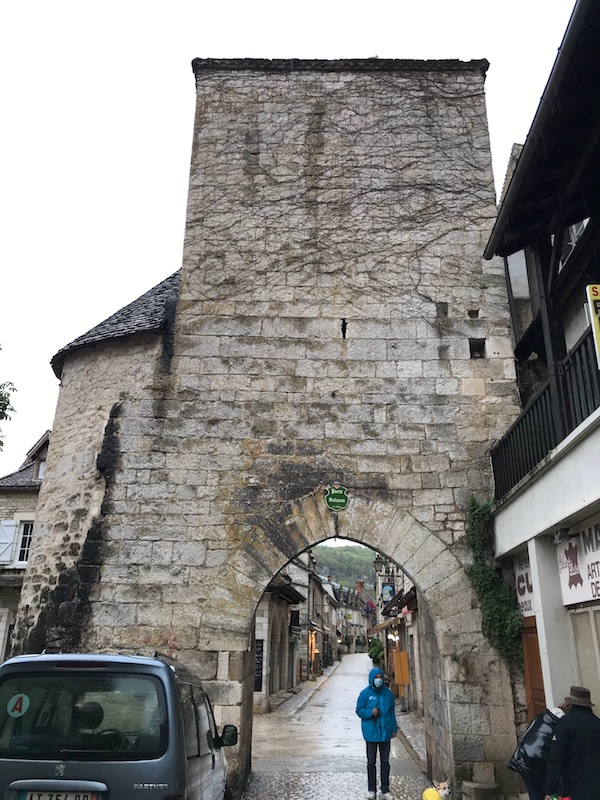

Instead of taking the stairs up, we opted to ride the elevator up to the religious level. You won't see anything from the upper level as the plateau (as it seemed to be called) was closed. Then we entered through another door and got a nice view of the village below and the cliffs on the other side of the valley.

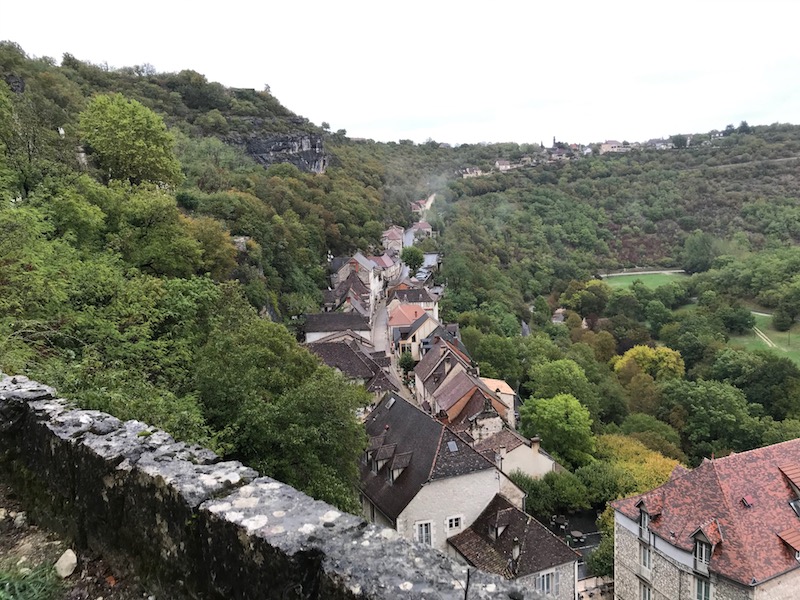
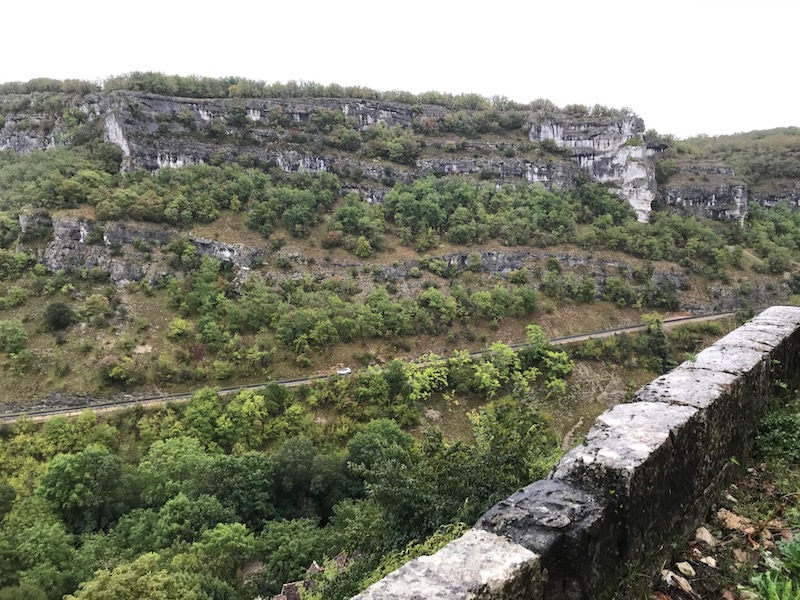
There are several different chapels at the religious level, and here you get a really good view of how this village is built up against, and in some cases into, the cliff. As you enter into the sanctuary, you enter the 12th century main square, paved with white stone. The chapels are arranged around this square. The main sanctuary is built on two levels: some of the chapels on the ground floor while the Basilica, Chapel of Notre-Dame and Chapel Saint-Louis are accessed up a grand staircase and around the raised platform.




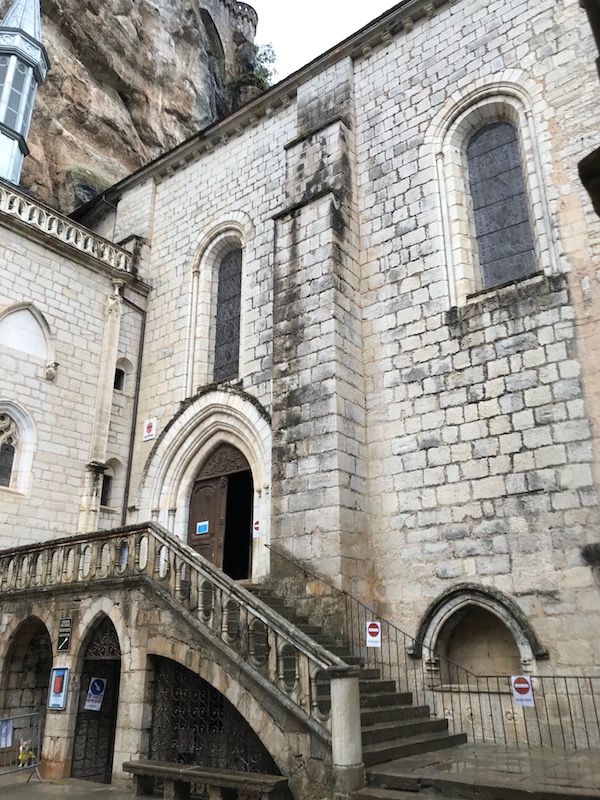
The first chapel is the Chapel of Notre-Dame of Rocamadour and it is the heart of the sanctuary. For nearly a thousand years, pilgrims from all over the world have come here to see the famous black Madonna. The door in a flamboyant Gothic style, decorated with the arms of the Bishop of Tulle Denis de Bar. It is surmounted by the coat of arms of Clément de Brillac, his successor at the bishopric. The interior was quite dark so the pictures didn't come out as good as I would have liked. Above the altar, the wooden Black Madonna statue dates from the end of the 13th century. It is made of two pieces of walnut, with the baby Jesus sitting on the left knee.

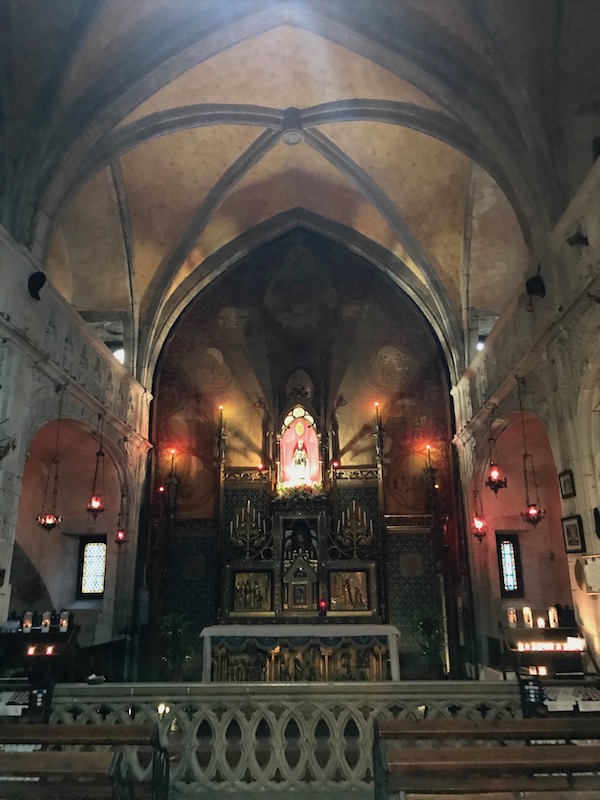



Then the Basilica Saint-Sauveur. The interior walls are covered with paintings and inscriptions recalling the pilgrimages of celebrated persons, although you won't see any of them because there was a sign saying no pictures were allowed. We also were not able to visit the crypt because there was a church service going on at the time.

A view of the passage back towards the Chapel of Notre-Dame, and just on one side is the Chapel of Saint-Louis, literally built in the rock


Chapel of Saint John the Baptist, which is quite small and you don't actually enter it (pictures taken through the gate). Transformed into a baptistery in the 19th century, it still houses the tomb of Jean de Vallon, knight of the order of St. John of Jerusalem and the portraits of some great pilgrims in the history of France. Octagonal in shape, it reminds us of the incarnation and resurrection of Christ.


Like some of the chapels, the Chapel of Saint Blaise is also quite small and dedicated to St-Blaise, who was healer and martyr of the 4th century.

This very large building is (or was) an art museum housed in the former palace of the bishops. Based on what information I could find, it has/had art from the 12th and 13th centuries up until the Renaissance.


We headed back down to the "town" level and attempted to get some amount of perspective of how high up the sanctuary is.



Down at the village level at the Porte Hugon. Several fortified gates protected the city from possible attacks in the 12th and 13th centuries. This gate, along with the Salmon gate, were inside the exterior walls and so wasn't really used for defense. It dates from the 13th century (one picture from each side).


On this gate, Porte Salmon, there was a discussion (in French) about the system of defenses. As this was a village of pilgrimage, it was a bit complicated because while it was important to defend the city from attacks, you also had to be able to let in the thousands of pilgrims visiting the sanctuary.

This is another 13th century door, Porte Basse. This was actually a defense gate, as it was on the exterior wall and was meant to prevent unauthorized access to the city.
